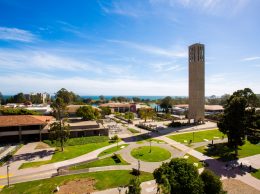Researchers at UC Santa Barbara created a new type of super glue for underwater use by studying how mussels, oysters and barnacles stick to rocks.
Researchers saw a need for adhesives that stick underwater. Because synthetic adhesives do not work well, UCSB scientists Jacob Israelachvili, Michael Rapp, Greg Maier, Herb Waite and Alison Butler turned their attention to natural adhesives.
Their findings appeared Thursday in the journal Science.
“There’s a real need in a lot of environments, including medicine, to be able to have glues that would work in an aqueous environment,” said Butler. “So now we have the basis of what we might try to develop from here.”
The researchers found that two chemicals called lysine and catechol worked best for underwater adhesion.
“In a nutshell, our discovery is that you need lysine and you need the catechol,” Butler said. “There’s a one-two punch: the lysine clears and primes the surface and the catechol comes down and hydrogen bonds to the surface. This is an unprecedented insight about what needs to happen during wet adhesion.”






 Print
Print Email
Email
















